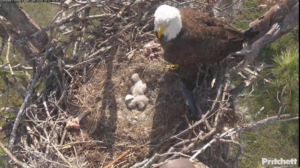Least terns, adorable little seabirds, have returned to the Sanibel Causeway for the second year running to raise their chicks.
The Sanibel-Captiva Conservation Foundation (SCCF) reports that these state-threatened birds were spotted nesting on Causeway Island B in 2023, marking their first return to the area in 30 years. This year, they’ve expanded their horizons, with nesting activity observed on both Causeway Island A and B!
“Least terns are social butterflies,” explains SCCF shorebird intern Riona Lahey. “They nest in large groups, needing wide-open spaces like beaches, mudflats, and even gravel rooftops. We’ve counted roughly 50 individuals spread across two sites on the causeway, with a few confirmed nests.”
The feathered friends arrived just as the rainy season kicked off in mid-June. Working with the Florida Fish and Wildlife Conservation Commission and the Florida Department of Transportation, the SCCF shorebird team swiftly marked off a safe nesting area during a downpour. This proactive step ensured the least terns wouldn’t be disturbed while laying their eggs.
“These markers are crucial for beach-nesting birds,” says Lahey. “They protect them from human interference and, in this case, the dangers of nesting in an active construction zone. Thankfully, monitors are always present during construction activities to guarantee the safety of the colony.”
Back in the day, least terns and black skimmers were frequent nesters on the causeway after its construction in the 1960s. Sadly, vehicle traffic and summer storms often led to unsuccessful nesting attempts.
All About Least Terns
Did you know the least tern (Sternula antillarum) holds the title of the world’s smallest tern? These tiny birds weigh a mere 1.5 ounces! Adults in breeding plumage are a sight to behold with their bright yellow bill and legs, a black cap that extends over their eyes and creates a white triangular patch on their forehead, and sleek, narrow wings.
Their nests, called “scrapes,” are simply shallow depressions dug in the sand where they lay their eggs. Incubation takes roughly three weeks.
“Least tern chicks are precocial, meaning they hatch with downy feathers and can move around right away,” explains Lahey. “Unlike most altricial chicks that are completely dependent on their parents, these little ones are quite independent from the start. They still rely on their parents for food and protection for about five weeks until they develop flight feathers and can find food on their own.”
Least terns typically arrive on Sanibel in early April and head back to warmer waters by August. Their journeys can take them as far south as Brazil!
The SCCF reminds everyone to be respectful of posted nesting areas and observe these fascinating birds from a distance. Disturbing nesting birds can leave their eggs vulnerable to predators and the harsh sun.
“Last year, the nests on the Sanibel Causeway faced challenges from predators and high tides washing over the low-lying nests,” says Lahey. “We’re hoping for a much more successful season for these least terns this year!”






